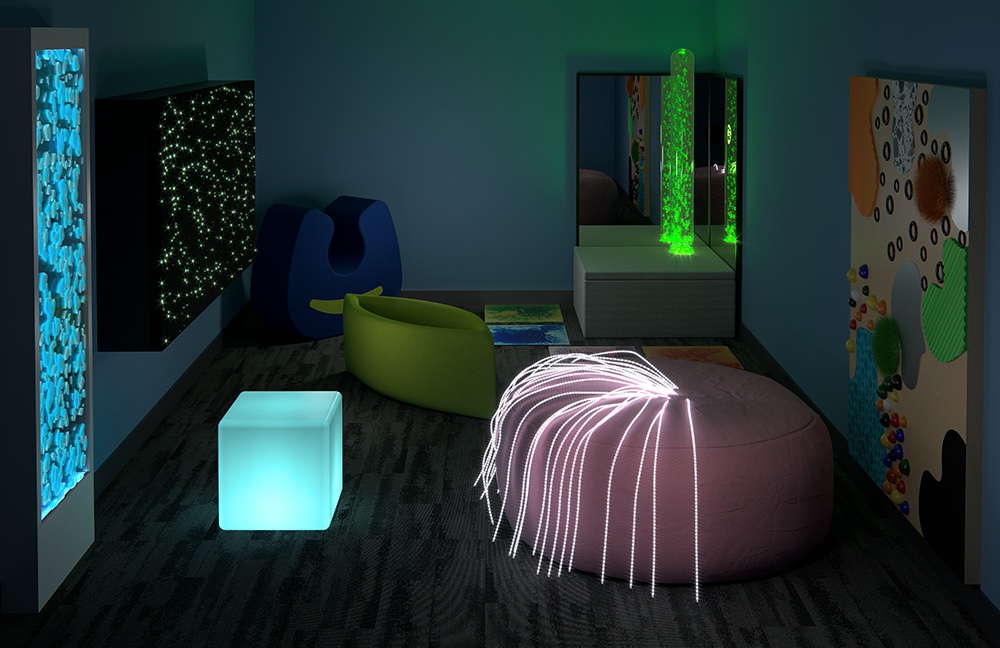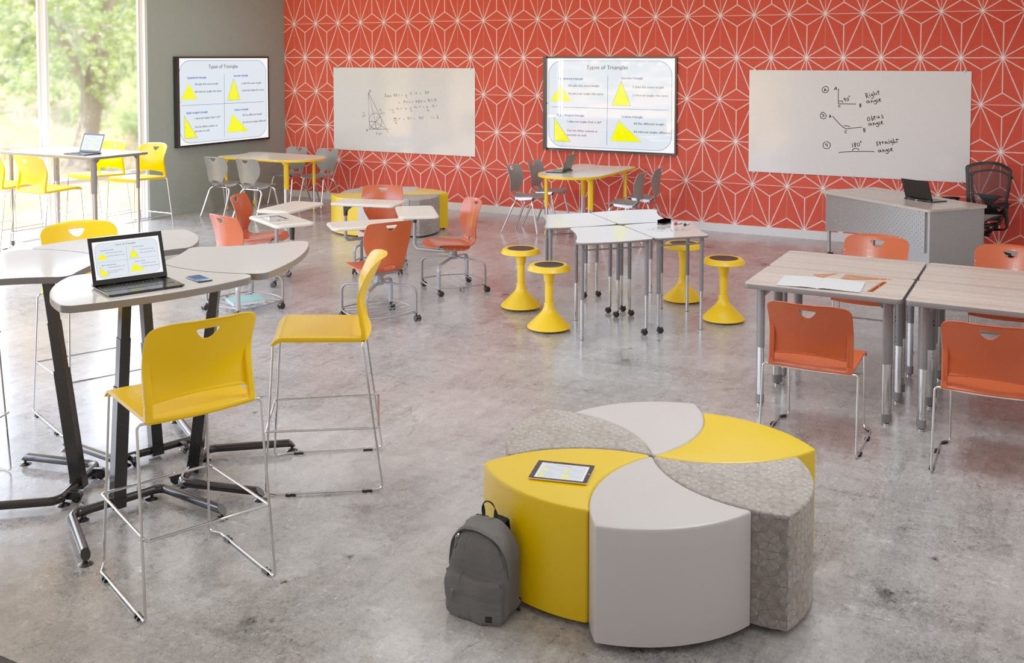Educators know their students have very diverse needs, and most are well versed in designing learning experiences that are universally inclusive. But while schools have become fairly adept at differentiating instruction to meet all students’ needs, the critical role that learning space design plays is often overlooked.
Why is this important? Data suggest that a significant number of students have special learning needs that must be addressed for them to thrive in the classroom. During the 2017-18 school year, 14 percent of students — or 7 million — had special needs, federal data show, and one in nine children under the age of 18 received special education services. The latest data from the Centers for Disease Control show that one in 59 children has been identified with autism spectrum disorder—a number that continues to rise.

Many students on the autism spectrum have sensory processing issues and are overly sensitive to touch, lights, and sounds. Sensory processing challenges may coexist in students with other special needs such as those with ADHD who tend towards sensory seeking behaviors. These conditions make it all the more challenging for students to find their place in the physical classroom.
More than half of students with disabilities spend the majority of their days in general education classrooms. With the increase in students who have special needs comes the imperative for schools to meet these unique needs — not just academically but also physically, through smart learning space design.
How a classroom is designed can have a big effect on how well all students — but especially those with special needs — are able to focus and learn in that environment. Here are five elements of learning space design that teachers and administrators should pay attention to as they seek to meet the needs of all learners.
Choice
Choice is important in the classroom, because it gives students ownership of their learning. Though it seems mundane, something as simple as choice in seating style accommodates different learning preferences for all students — not just those with special needs — and makes classrooms more inclusive.
Classrooms and other learning spaces that include multiple seating options, such as standing desks, clusters for small-group learning, soft seating, and traditional desks and chairs, help students make choices to support how they learn best.
Offering a variety of easily moveable seating choices also ensures that students with different preferences can still work together: A student who prefers a standing desk can work in a group with a student who learns best sitting in a beanbag chair, for instance.
These flexible, collaborative learning spaces promote responsible decision-making and build confidence in students. When students have the freedom to make learning decisions for themselves, they feel less isolated.
Movement
All students need to move throughout the school day, and those with sensory processing challenges or difficulty self-regulating are apt to move more frequently. Physical spaces designed for all learners should accommodate the need to move, and research supports the idea that frequent movement and fidgeting might actually help students with ADHD learn better.
“Fidget” seating and “wobble” stools allow for movement by letting students twist, rock, or move in other ways without disrupting the physical flow of a classroom. Students who habitually tip their chairs back may be seeking extra vestibular or movement input for self-regulation to help maintain focus and attention. Seating that rocks and allows for movement addresses this need, while also keeping students safe and preventing falls.
Quiet, calming spaces
More and more school leaders recognize the importance of offering quiet spaces or “chill zones” —separate areas of the classroom that are available to students who need private moments. These spaces allow teachers to give students a “time in” to calm down without excluding them from the classroom.
These quiet spaces, which can also be located in a separate room, offer gentle lighting and sound-absorbing or sound-blocking qualities, along with furniture that helps define spatial boundaries (such as chairs with higher backs and sides) to help children feel secure in their physical space. Sensory solutions that offer deep touch pressure input such as a weighted lap pad or bean bag chair may help promote self- regulation for calming and organizing.
Visual or auditory input for calming is another common “chill zone” feature. Nature sounds, including water-related noises such as ocean waves or a babbling brook, work well in these spaces. Sensory supports such as bubble tubes are great for quiet spaces because they give students something soothing to watch, which may help promote a more calming, positive vibe.

Lighting
Because students with sensory challenges or other special needs are often sensitive to lighting, fluorescent lights can inhibit their ability to focus and present a huge challenge. Classroom lighting should come equipped with a dimmer switch and the ability for teachers to darken the room, and specially designed lights can help educators accommodate sensitivity to fluorescent lighting. Green Furniture Concept’s Leaf Lamp series is one such light, pulling double duty to offer ambient lighting along with sound-absorbing qualities found in the materials and shape of the leaves.
In one school, a nonverbal student on the autism spectrum had trouble reading his visual input communication device because fluorescent lighting in the classroom cast a glare on the laminated page of images. Teachers thought the student had cognitive issues that prevented him from using the device, until one observed the student blinking very quickly as he tried to get a good look. His special education team realized the classroom’s fluorescent lighting made it difficult for him to see the laminated page.
This student began wearing a visor to counteract the glare from the lights, and educators printed images on a blue sheet of paper instead of a white sheet to help with visibility. He was actively using the communication device within a few weeks after those changes occurred.
Acoustics
Most new schools or schools undergoing extensive renovations include built-in auditory amplification, but acoustics can present a challenge in many older buildings. Classroom amplification systems are helpful for students with auditory processing disorders, such as those who have trouble filtering out background noise from computers, the hallway, or even other students.
Large open spaces, such as those found in cafeterias or gymnasiums, are noisier — but some manufacturers are designing aesthetically pleasing, sound-absorbing panels, often in the shape of school mascots, to quell raucous noise. Classrooms, sensory rooms, and media centers can offer “noise pods,” such as this sensory pod from Nook, which helps block noise and prevent a sensory overload. These pods give students with sensory issues a quiet and calm space in which they can feel secure.
Thinking beyond curriculum
Educators receive extensive training in how to differentiate instruction for students. But what’s often overlooked is training in how to differentiate the physical space for students, including those with special needs. We must ensure there are enough choices in educational spaces to help us meet the needs of every learner. We can do this by extending those same thoughts about pedagogy and curriculum to the physical spaces where students learn each day.



